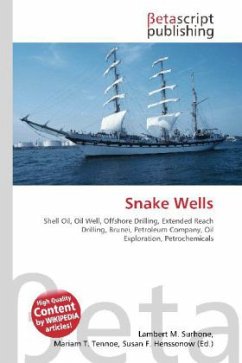Please note that the content of this book primarily consists of articles available from Wikipedia or other free sources online. The earliest known oil wells were drilled in China in 347 CE. They had depths of up to about 800 feet and were drilled using bits attached to bamboo poles.The oil was burned to evaporate brine and produce salt. By the 10th century, extensive bamboo pipelines connected oil wells with salt springs. The ancient records of China and Japan are said to contain many allusions to the use of natural gas for lighting and heating. Petroleum was known as burning water in Japan in the 7th century. The Middle East''s petroleum industry was established by the 8th century, when the streets of the newly constructed Baghdad were paved with tar, derived from petroleum that became accessible from natural fields in the region. Petroleum was distilled by the Persian alchemist Muhammad ibn Zakar ya R zi in the 9th century, producing chemicals such as kerosene in the alembic, and which was mainly used for kerosene lamps.Arab and Persian chemists also distilled crude oil in order to produce flammable products for military purposes. Through Islamic Spain, distillation became available in Western Europe by the 12th century
Bitte wählen Sie Ihr Anliegen aus.
Rechnungen
Retourenschein anfordern
Bestellstatus
Storno








